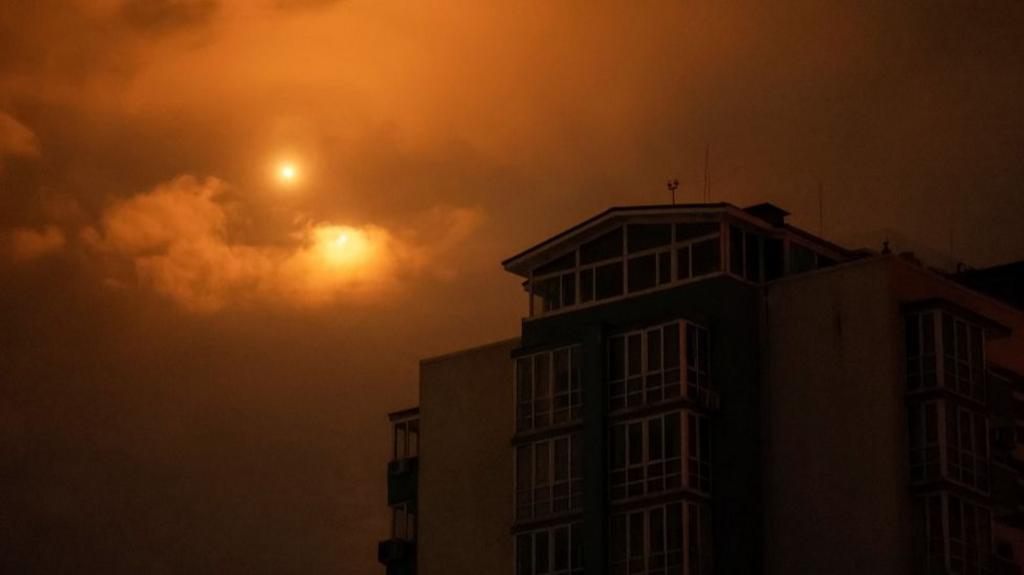Poland’s military scrambled its own and NATO air defenses on Wednesday to shoot down drones that entered its airspace during a Russian attack on western Ukraine. This is the first time in the Ukraine war that Poland has engaged military assets to intercept drones within its territory following a NATO airspace violation.
Poland Scrambles Air Defenses After NATO Airspace Violation
The Polish military said that multiple drones repeatedly entered Poland’s airspace while Russia carried out air strikes across the border in Ukraine. The defense ministry confirmed that it had informed NATO’s command about the NATO airspace violation. Radar systems tracked more than 10 flying objects and neutralized those that could pose a threat, the military said in an official statement.
Polish forces successfully shot down some of the drones, and search teams are working to find where the debris from the drones has fallen. Authorities are continuing efforts to locate possible crash sites. They asked people living in the regions of Podlaskie, Mazowieckie, and Lublin to stay at home as the military continues its operations.
NATO vows strong response as Russia and Belarus launch massive Zapad 2025 war games near Poland
Poland’s army described the NATO airspace violation as an “act of aggression.” The defense ministry stated that Polish aircraft used weapons to target hostile objects in the airspace. Military officials confirmed that they are maintaining constant communication with NATO’s command structure to coordinate their actions.
Because of the military operation, authorities halted air traffic at Chopin Airport in Warsaw, the largest airport in Poland, and closed the airspace above the airport for safety reasons. The U.S. Federal Aviation Administration also confirmed that it temporarily closed four airports in Poland, including Rzeszow–Jasionka Airport in the southeast. Rzeszow Airport serves as a hub for passengers and arms transfers to Ukraine.
As of early Wednesday morning, Ukraine’s air force had issued air raid alerts for all regions of the country, including western parts that border Poland. Ukrainian forces later removed a statement that had reported Russian drones had entered Polish airspace and threatened the city of Zamosc.
International Reactions Over NATO Airspace Violation
The violation of Poland’s airspace has drawn attention from international security experts and lawmakers. In the United States, political leaders described these repeated drone entries into NATO airspace as serious security threats. Some lawmakers believe that these actions are a deliberate attempt by Russia to test NATO’s resolve in defending its members following a NATO airspace violation.
Experts in Europe and the U.S. have pointed out that drone incursions into Poland’s airspace are not accidental. They believe these events are a way to check how quickly and effectively NATO and its member states respond to threats near their borders.
No NATO, but U.S. protection—Trump redraws Ukraine’s defense future with Article 5 twist
This incident follows earlier security concerns after a stray missile from Ukraine struck a village in southern Poland in 2022, causing fatalities. At that time, NATO’s airspace violation had not led to any defensive action. The current event marks a significant shift in how Poland is handling airspace violations.
In addition to the drone attacks, Poland’s border with Belarus is set to close due to ongoing military exercises led by Russia and Belarus. These drills, known as the “Zapad” exercises, have raised alarms among NATO members near Belarus and Russia’s borders, such as Lithuania and Latvia. Lithuania has also announced that it would strengthen its border defenses as a precaution.
Ongoing Military Actions and Regional Impact
The military operation in Poland is still underway as authorities search for debris and monitor possible threats. Security agencies are actively tracking airspace movements and coordinating with NATO forces. Residents in affected areas have been advised to remain indoors while the situation develops.
Poland’s action comes amid a broader conflict as Russia continues its military operations in Ukraine. This escalation into NATO airspace adds a new layer of complexity to the security situation in Europe. The NATO airspace violation is being closely watched by neighboring countries and military alliances.
The European Union’s top sanctions officials have been holding talks in Washington, aiming to coordinate transatlantic measures against Russia. These discussions are expected to lead to the first unified sanctions effort since a new administration took office in the U.S.
NATO allies caught off guard as Washington cuts security funding for border defense programs
Meanwhile, NATO members are reassessing their readiness and response strategies to drone incursions and other threats near their borders. Reports from military experts highlight that these drone movements are likely to be intentional tests, rather than random or accidental breaches, contributing to repeated NATO airspace violations.
The air raids in Ukraine, along with drone activity near Poland’s borders, continue to affect civilian life and transport. Authorities have temporarily closed several airports and restricted air traffic to prioritize public safety and military operations.
Poland’s military remains on high alert. Continuous tracking of threats and swift defensive actions aim to ensure the safety of both military personnel and civilians living near the border areas. Authorities continue working with NATO forces to manage the crisis and respond to further NATO airspace violations.

